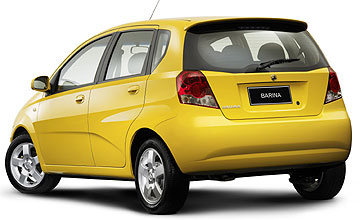BY BYRON MATHIOUDAKIS | 13th Oct 2005

It was more ‘neat-neat’ than ‘beep-beep’.
And while it has since been outclassed by the Honda Jazz, Mazda2, Ford Fiesta and Suzuki Swift, the ‘Opel’ Barina’s demise will be sorely misses since it ably (and uniquely) straddled the cheap and premium light-car segments.
But car-makers are in the business to make money and even at $12,990 the Daewoo-derived TK Barina has to make hay for Holden.
Viewed this way it makes a perfectly serviceable segment presence against the sub-$15K cheapies like the Hyundai Getz, Kia Rio and Toyota Echo.
The fact that it also undercuts them by a significant margin means that it can attract folk into safe (three-star Euro NCAP), warranty-backed, well-specified new-car motoring for the price of a used car.
And as a driver’s car, the new Barina isn’t at all the underwhelming disappointment its Daewoo heritage might have suggested.
The truth it’s positively peppy thanks to the 77kW 1.6-litre engine’s eager and enthusiastic power delivery.
Surprisingly, the cabin is spacious for its size, with adequate seating, easy to use controls and the ambience that’s surprisingly not el-cheapo. No nasty toxic plastic smells in here!
And while the Barina’s light steering and benign dynamics mean that Ford’s Fiesta engineers won’t lose any sleep, the TK’s pliable ride and responsive handling should suit most buyers down to the ground.
On most urban roads the automatic five-door hatchback in particular comes across as a smooth and capable device.
But this is where the good news ends for the TK Barina.
Because while the car feels frisky there’s too much engine and road noise for it to ever be referred to as refined – although the latter isn’t as bad as that experienced by GoAuto in a Mazda2 recently.
Revving the 1.6 to its limit is like turning the engine noise volume control up to max.
The five-speed manual gearshift is labourious to use (a typical front-drive GM/Daewoo downfall), lacking positive feel or any real sense of quality.
As a result, spending the $2000 extra for the automatic is highly recommended. It’s a far happier engine-trannie combo than the manual.
And the ride can feel quite choppy on some seemingly smooth urban surfaces, with rougher roads revealing further limitations.
The three-door in particular has its own special set of annoyances.
Over the shoulder vision is limited by the thick C-pillar a too-narrow aperture hampers rear-seat entry/egress the seat will tilt but not slide in a single movement there’s no previous-position seat memory and knees can easily graze painfully against the seat’s protruding tilt lever.
So the most expensive model – the five-door TK Barina automatic at $16,490-plus – is the most pleasant of the new baby Holdens. Even at that price it’s cheaper than most rivals’ five-door manuals, and that’s got to be a good thing.
But we’d rather pay more for the last of the XC Barina run-outs, even if the base models never offered the option of anti-lock brakes like the TK model does.
Holden has hinted that the next-generation models – developed fully by GM engineers – will be very promising indeed.
In the meantime, however, ‘beep-beep’ has turned ‘cheap-cheap’ in more ways the one.